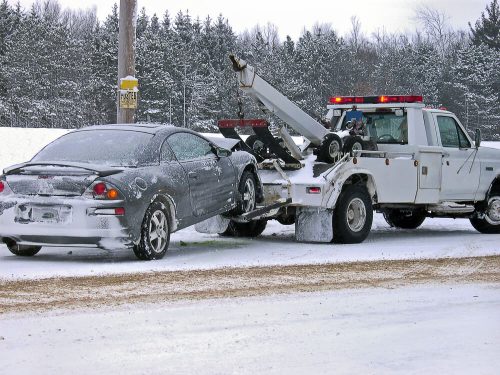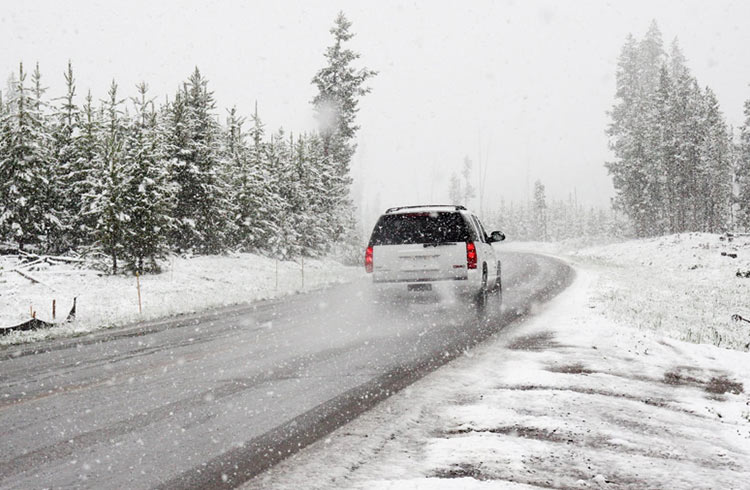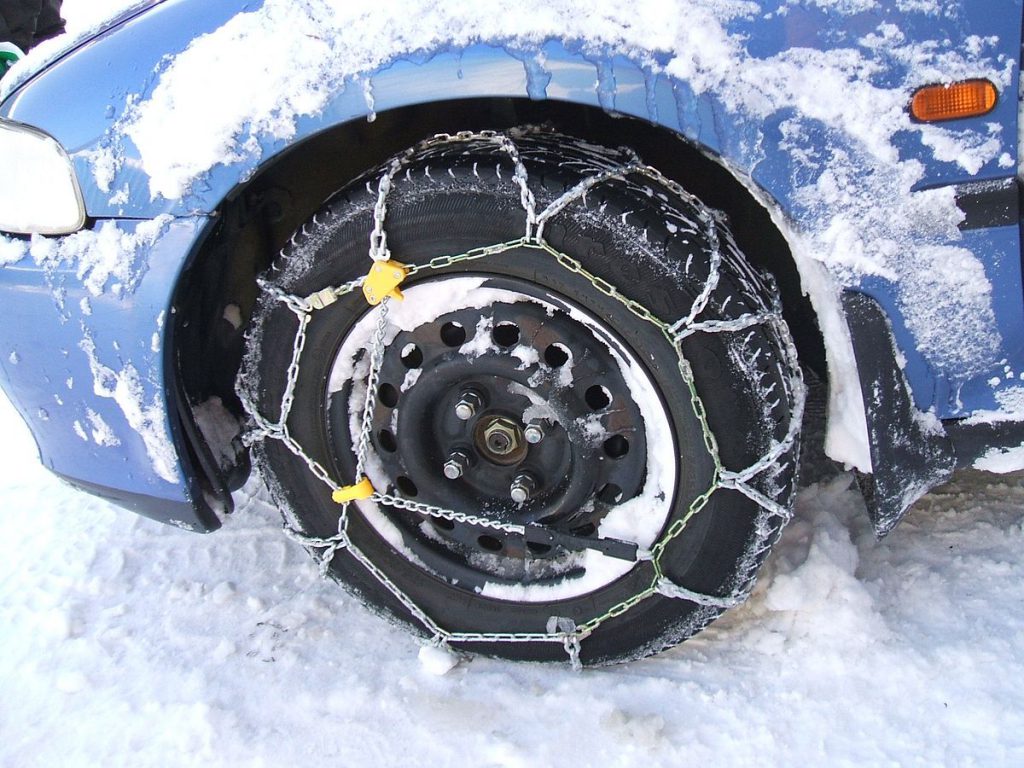
Extreme weather will bring your car and your driving skills to the test, so getting ready for winter driving is important for staying safe on the road. High winds, low visibility, and temperature fluctuations are all examples of weather conditions that can hinder one’s ability to drive. Vehicle performance, manoeuvrability, stability, and traction can all be affected at the same time in winter. If you have a breakdown during the New Year holiday season or need cheap towing in Brisbane, call us, the best towing and roadside assistance service in town.
Follow the detailed checklist below to learn more about how to drive safely in the winter.
1) Always Be Prepared
Prepare for your journey before you leave in the winter. Pay attention to traffic and weather conditions because they will assist you in making the best decision possible when the time comes. Upgrade your car’s hardware to make it a winter fighter, and train your brain to drive safely in the snow. The first thing that needs to be replaced is the vehicle tyres, which should be replaced with snow tyres or all-season tyres with thicker tread for cutting through the snow with a strong grip.

While auto hardware is essential, it’s how you think and drive on a snowy day that can make or break your game. First and foremost, slow down, not just in terms of speed, but also in terms of how quickly you think and move your hands and feet. Low friction surfaces such as snow, ice, and wet roads take longer for tyres to grip and change direction or speed. To minimize the chances of being trapped, stop coming to a halt frequently; instead, use the brakes and accelerator smoothly and firmly.
Everything takes longer to drive in the winter, particularly turning and stopping. As a result, you must be alert and keep an eye on the road ahead to avoid any mishaps or halts. You’re leading with your eyes, and your hands will follow, so resist the temptation to use your phone and keep your eyes on the road. In the summer, it may only take 150 feet to come to a stop, but in the snow, it may take 500 or even 1,000 feet. This is a very important point that you should keep in mind whenever you want to stop somewhere so that you start pressing on the brakes a little before you reach your destination otherwise you might crash and have to look for cheap towing in Brisbane.
2) Make Sure Your Tyres, Wipers And Screenwash Are In Good Working Shape
For every 10-degree decrease in temperature, tyre pressure drops by two PSI on average. As a consequence, it’s important to check your vehicle’s tyre pressure before you start driving and at each fuel stop if you think it’s necessary. On a dry road, the tire’s grip, or “coefficient of friction,” is about 1.0, but on snow, it decreases to a staggering 0.15, meaning there is practically no friction. As a result, snow tyres, chains, or snow socks are recommended to provide the requisite grip and prevent your car from slipping on the road. If your car does slip on the road, you may end up hitting another vehicle on the road or a pole or a bridge which is why it is very risky and you might need to call cheap towing in Brisbane that you can find if something like this happens with you.
Wipers clear the windshield to provide a clear vision, so they must be in good working order during rain or snow. If the wipers are frozen to the windshield, make sure you switch off the auto wiper control before starting the car, as this could zap the wiper control fuse.
In cold winters, where water may freeze and prevent windscreen wipers from working properly, a screenwash may be necessary. To stop this from happening and obstructing your drive, use a high-quality screen-wash. Otherwise, you might get into an accident if your windshield is blocking your vision. If that does happen, then be ready to call any services that you can find for cheap towing in Brisbane to help you out.
3) Be Equipped For The Worst
Weather conditions can be hazardous to your health and the health of your passengers, so you should be prepared for the worst. On the lane, be prepared for something. Also, make sure you have all of the required items on hand in case of an emergency. Keep the number of any cheap towing in Brisbane services that you can find on speed dial so that you can reach out to them immediately in time of your need.
- Alert signs and a high-visibility vest
- Batteries and a torch
- A battery pack or jumper cables
- Dry food and water
- Hot clothing and a blanket
- Kit for first aid
- A spade and a piece of carpet can be used to help tyres achieve traction.
- Charger for phone
- Contact information for cheap towing in Brisbane and roadside assistance services in the event of a breakdown.
4) How To Drive In The Cold Weather?

- Wear footwear that is both warm and dry.
- To minimize the chances of slipping, drive the car at moderate speed. Use low revs and quickly move to a higher speed.
- Start in second gear to keep the vehicle going steadily. Only a few cars have a winter mode that does the same thing.
- Maintain a steady pace while maintaining a reasonable distance between you and the next vehicle. To provide adequate stopping distance, one should maintain approximately ten times the recommended space.
- Maintain enough distance from the next car when going uphill so you can maintain a steady pace and avoid having to change gears or slow down on a steep road.
- When driving downhill, use a lower gear and, if possible, avoid braking.
- Since water, snow, and ice are slippery, avoid making sudden turns. Brake before turning the steering wheel while approaching a bend or turn.
- Don’t panic if your car loses traction and begins to skid or slide; simply take your foot off the accelerator. Make sure the wheels are aligned in the same direction as the car is slipping and don’t apply the brakes. Keep your hands on the steering wheel and don’t bang on the brakes too hard.
- Just use dipped headlights when it’s snowing or foggy. When visibility falls below 100 metres, however, fog lights should be used.
- If the roads are not gritted, stop driving on the tracks of other vehicles because compact snow is more sticky.
- When driving, use caution when handling the vehicle. Accelerator, steering, braking, and even gear changes can all be done softly and smoothly.
- Finally, reduce the vehicle’s speed to allow yourself more time to steer and brake.
Pro Tip:
During the winter, wash your car more often because the salt used to de-ice the roads will cause corrosion over time that may lead you into a car crash, causing you to search for cheap towing in Brisbane to help you recover.
5) Be Aware Of Your Car’s Capabilities
My Car Does What? is a nationwide initiative that seeks to inform drivers about automotive safety features. Look up your vehicle to see what safety features are already included.
Many new vehicles now come with traction control as standard equipment. This feature assists your vehicle in gaining traction on snowy, frozen, or wet surfaces, particularly when accelerating from a stop or slowing position, or when attempting to climb a slippery hill.
ABS (anti-lock braking system) lets you steer in an emergency by returning traction to your tyres, and it’s also common on most new cars. When ABS is activated, it can vibrate or pulse. This is perfectly natural. Continue to push and keep the brake pedal flat.
Keep in mind that you are your vehicle’s greatest safety feature. Take care to ensure that you reach your destination safely. Do not leave your car if you become stuck in an unfamiliar place be sure to have the number for any cheap towing in Brisbane that you can find on speed dial. Make sure the exhaust pipe is not covered by snow, dust, or other objects by using light flares in the front and behind the vehicle.
Conclusion
Thus, whenever you are going out to drive in winter, be prepared for any kind of situation and always have the number of any cheap towing in Brisbane services that you can find on speed dial or you can also try road assistance services. In any case, these tips are going to help you prevent any accidents that commonly occur on roads due to the cold weather the snow. As prevention is the best cure, it is a better idea to avoid driving as long as you can, if the roads are full of snow and if you are not an experienced driver. If you have experience of driving on snow, only then go out with your car as long as it is urgent.

